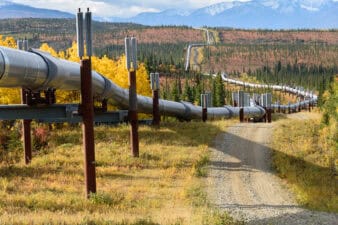Since the ground-breaking OPEC oil deal — which, importantly, was joined by non-OPEC members, including Russia — global energy markets appear to be in the process of rebalancing. The deal triggered a surge in crude, which is up by almost 13% over the last three months to be trading at US$53 per barrel.
Along with an increasingly positive outlook for the global economy, this is feeding considerable optimism among many industry insiders and analysts as to the outlook for oil stocks and the energy patch in 2017. It has even prompted claims that the oil industry bankruptcy wave has come to an end.
Nonetheless, there are signs that crude prices could face further challenges throughout 2017.
Now what?
One of the biggest challenges facing crude is if OPEC, along with Russia and other non-OPEC participants, is capable of reducing production by the 1.8 million barrels daily flagged.
There has been a long history of OPEC nations, such as Iran and Iraq, ignoring or even defying production quotas. Both Teheran and Baghdad have made it clear that they intend to boost desperately needed oil revenues to fund the conflicts against ISIS as well as rebuild their shattered economies.
And OPEC member Libya was exempted from the cartel’s decision to cut oil production. The deeply troubled North African nation, which has been locked in a disastrous civil conflict since 2011, remains focused on bringing oil production back online. This could mean an additional ~400,000 barrels daily from two western oil fields that were partially reopened in mid-December 2016.
Another threat to oil prices is the likelihood that as prices rise, U.S. shale oil producers will substantially ramp up production.
Advances in drilling technology and major cost cutting by shale oil companies mean the breakeven prices for many U.S. shale oil formations are at less than US$65 per barrel. The low breakeven costs become clear when reviewing the results of a range of major shale oil producers.
One of the largest shale operators, Continental Resources Inc. (NYSE:CLR), has implemented considerable efficiencies at its Bakken and Oklahoma acreage to reduce breakeven costs to about US$36 per barrel.
As a result, with West Texas Intermediate (or WTI) hovering around US$53 per barrel, there is a considerable incentive for companies like Continental to ramp up production.
In fact, one investment bank has estimated that if WTI goes to US$60 per barrel, then the U.S. shale industry would add up to one million barrels daily.
Then there is the North American log of drilled but uncompleted wells.
Many industry insiders estimate that these could become economic to complete and open the spigots with WTI between US$55 and US$60 per barrel. It is estimated that these alone could add up to another 300,000 barrels daily of production.
So what?
It is increasingly clear that OPEC will enforce the planned production cuts. Many members are facing considerable fiscal pressures because of the slump in crude, and there are the Saudis’ fears that that cartel is losing its political clout.
Nevertheless, the supply reduction can be easily filled.
Swelling shale oil production coupled with Libya and some non-OPEC states seeking to boost oil output means those barrels will be easily replaced. This will keep pressure on oil prices far longer than many pundits currently believe. This means many heavily indebted oil producers such as Baytex Energy Corp. (TSX:BTE)(NYSE:BTE) and Pengrowth Energy Corp. (TSX:PGF)(NYSE:PGH) could lose the gains made in recent weeks.






